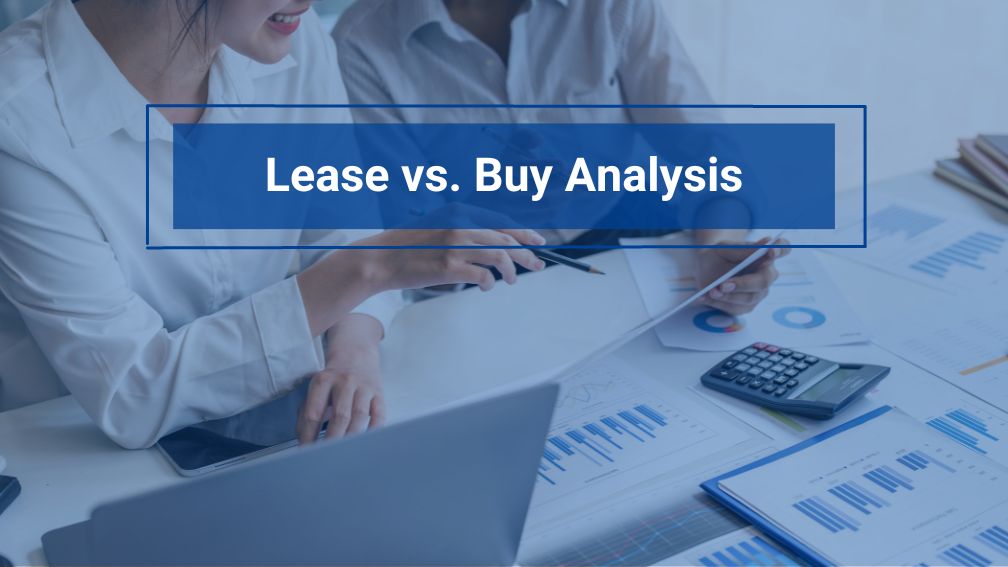How to Perform a Lease vs Buy Analysis Under ASC 842
Last Updated on September 14, 2023 by Morgan Beard
The new lease accounting standards (ASC 842) have changed the game when it comes to lease vs buy decisions. With the updated standards requiring more lease liabilities on the balance sheet, companies need to take a closer look at the implications of leasing vs buying assets. Performing a detailed lease vs buy analysis can help you make the right decision for your business and financial strategy.
Understanding the New Lease Accounting Standards
First, let’s look at what’s changed under the new guidelines. ASC 842 introduces a new lease accounting model that requires lessees to recognize right-of-use assets and lease liabilities on the balance sheet for most leases. This means that both operating and finance leases will typically be capitalized on the balance sheet.
ASC 842 mainly impacts lessee accounting, bringing more transparency to the financial statement for users. The goal is to provide investors and other financial statement users with a clearer picture of a company’s leasing activities.
Why Performing a Lease vs Buy Analysis Matters
With more lease activity being reflected on the balance sheet under the new standards, the lease vs buy decision takes on greater importance. The analysis helps you determine the most financially advantageous option and the impact on metrics like EBITDA.
Buying and owning an asset results in depreciation expense being recorded on the income statement. In addition, the purchased asset’s fair market value the purchase will have an effect on the companies financial health. Leased assets often results in straight-line rent expense. A bigger security deposit down could help with negotiating lower monthly lease payments. The lease vs buy analysis provides an opportunity cost report which informs you on which option minimizes costs and optimizes your financial KPIs.
How to Perform a Lease vs Buy Analysis
Conducting a lease vs buy analysis involves some key steps:
Calculate the Net Present Value of Leasing
First, determine the net present value (NPV) of leasing payments over the term of the lease. This requires:
- The total lease payments
- The lease term
- The interest rate implicit in the lease or the incremental borrowing rate
Discount the total lease payments to their present value using the appropriate discount rate. This is the NPV of leasing.
Calculate the NPV of Buying
Next, determine the NPV of buying the asset outright. This includes:
- Purchase price
- Installation, delivery, tax costs
- Expected salvage value at the end of useful life
Discount the purchase price and other costs to find the NPV of buying. Subtract salvage value.
Compare NPV of Leasing vs Buying
Compare the two NPV calculations. The lower NPV is the more cost-effective option over the term.
If NPV of leasing < NPV of buying, leasing is financially advantageous. If NPV of buying < NPV of leasing, buying is the better option.
Consider Other Factors
The NPV analysis provides critical data, but also consider qualitative factors:
- Tax implications – Ownership may provide more tax deductions
- Maintenance costs – Leasing may include lower maintenance costs
- Obsolescence risks – Shorter lease terms reduce risks of changes in tech/needs
- Flexibility – Leasing may offer more flexibility to change assets
- Cash flows – Buying requires more upfront capital expenditure
- Business strategy – Align decision with strategic business goals
Lease vs Buy Analysis Example
Let’s walk through an example lease vs buy analysis for potential new equipment:
- Equipment purchase price: $100,000
- Useful life: 5 years
- Salvage value: $10,000
- Lease term: 5 years
- Annual lease payment: $25,000
- Incremental borrowing rate: 6%
NPV of buying = $100,000 purchase – $10,000 salvage / (1.06)^5 = $85,194
NPV of leasing = $25,000 * (PV of Annuity Factor at 6% for 5 periods) = $107,170
In this example, the NPV of buying is lower than the NPV of leasing. Buying the equipment is the more cost-effective choice over the 5 year term with these assumptions.
Download our Present Value Calculator
Key Takeaways for Your Lease vs Buy Analysis
- Calculate NPV for leasing and buying options
- Lower NPV is better financially over the term
- Consider qualitative factors beyond just NPV
- Align decision with business strategy
- ASC 842 makes the analysis more crucial pre-acquisition
Using this lease vs buy analysis process will lead to informed, strategic decisions for your asset acquisitions.
Lease Accounting Resources
Check out our resource hub. We have the templates, spreadsheets, and calculators to help you manage entire lease lifecycle.
Frequently Asked Questions
Q: Should I use the incremental borrowing rate or implicit rate in my analysis?
A: Use the implicit rate if it is readily determinable. If not, apply the incremental borrowing rate.
Q: Can I use the analysis for real estate leases too?
A: Yes, the same methodology can be applied to office space or equipment leases.
Q: What discount rate should I use?
A: Use the rate inherent in the lease if available. If not, use your company’s incremental borrowing rate.
Q: What qualitative factors are most important?
A: Consider tax incentives, flexibility, maintenance costs, risks, and alignment with overall strategy.
Q: Does the analysis change under ASC 842?
A: ASC 842 reinforces the importance of the analysis since more leases are capitalized.
